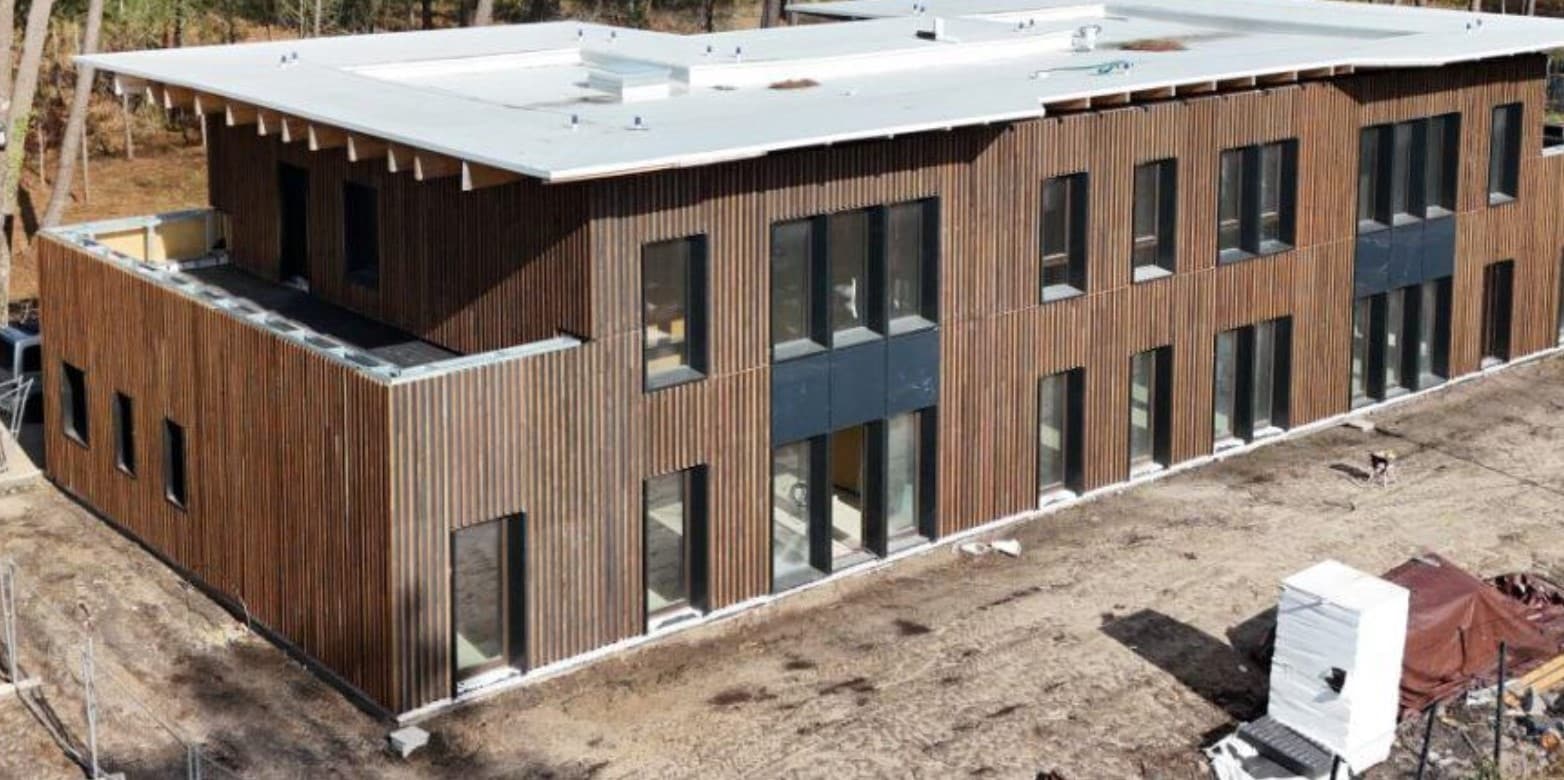EU Forests: A Sustainable Foundation for Green Construction
In an innovative leap towards sustainable architecture, the European Union is harnessing the power of its forests to revolutionize the construction industry. In the heart of France’s Gironde department, renowned for its verdant expanses, a secondary school stands as a testament to this green initiative. Constructed using wood from local pine trees, the Pian-Médoc school is part of a broader effort to utilize nearby forest resources while ensuring their conservation.
Maxim Peveri, a project manager at the Gironde department, emphasized the project’s commitment to preserving existing trees and repurposing those that were removed. This approach aligns with the objectives of BASAJAUN, a Europe-wide research project funded by the EU to promote wood as a versatile and recyclable building material. As BASAJAUN reaches its conclusion after four and a half years, its achievements are coming to light, particularly with the wooden apartment building adjacent to the school.
Dr Javier García Jaca, BASAJAUN’s coordinator and a project director at Tecnalia Research and Innovation Foundation in Spain, describes the building as a “demonstration showcase.” Set to open its doors in April 2024, this two-storey edifice with 16 flats is constructed with wood from Spanish and Swedish suppliers. Its design features a disassemblable facade, structural insulated panels made of natural wood fibre, and a bio-composite frame—showcasing the potential for rural areas to contribute to greener construction practices.
Italian company Focchi crafted the facade, while Spain’s Garnica manufactured the insulation panels, and Moelven of Sweden supplied the wood for internal beams. These companies, all partners in BASAJAUN, exemplify how collaboration across borders can lead to environmentally friendly solutions in construction.
The European Green Deal aims to transform production for climate neutrality, and the New European Bauhaus initiative connects this goal with everyday living by blending architecture with sustainability and inclusion. With buildings accounting for significant energy consumption and greenhouse gas emissions in the EU, wood presents an attractive alternative. As trees grow, they store carbon dioxide, and when used in construction, they continue to act as carbon sinks.
Forests cover around 39 percent of EU land, offering a substantial domestic source for sustainable building materials. The BASAJAUN project estimates that new residential wood buildings could potentially store 55 million tonnes of CO2 annually—equivalent to the emissions from over 12 million petrol cars.
Beyond construction, the project has also developed a digital tracking system for wooden materials, providing insight into the economic, environmental, and social benefits of wood. To amplify the wood sector’s influence within the New European Bauhaus, BASAJAUN has established Wood4Bauhaus.eu.
Another EU-funded project, WOODCIRCLES, focuses on recycling Europe’s wood waste. Dr Anders Kjellow from the Danish Technological Institute highlights the challenges of variable quality in wood waste and seeks to create value chains that minimize waste and resource consumption. WOODCIRCLES is also developing a disassemblable wood-based building system for easier reuse.
As Europe strides towards sustainability, projects like BASAJAUN and WOODCIRCLES are paving the way for a future where buildings not only embody eco-friendliness but also contribute actively to environmental preservation. The wooden apartment building near Bordeaux is just one example of how these initiatives are laying the groundwork for a greener tomorrow.
This article was originally published in Horizon, the EU Research and Innovation Magazine.





